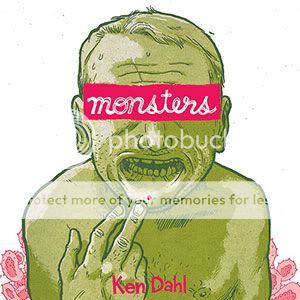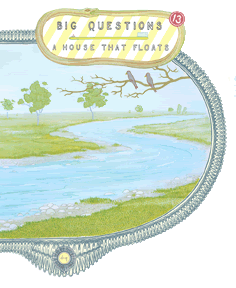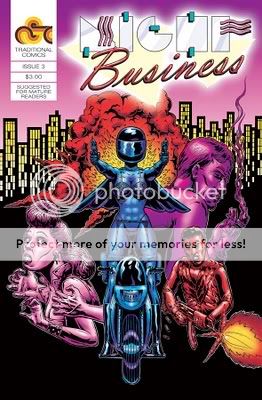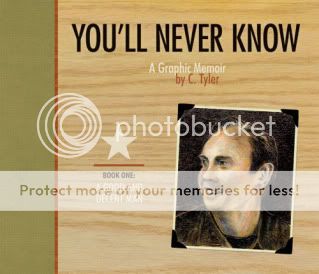Avatar is a so-so movie that I highly recommend you see in as big and expensive theater as possible. My evening at Avatar cost me in the neighborhood of $30 all told, and had to be scheduled half a week in advance, like an in-demand local theater production or something. I do feel like I got my money’s worth, even though everything that everyone says about the movie is 100% true. It’s a deeply impressive visual experience tied to a deeply pedestrian script. But you don’t ride the Cyclone for the character arcs, do you? Seeing the movie in 3D on the biggest IMAX screen in New York State that isn’t for a museum seems to me the ideal way to see it. So yeah, thirty bucks well spent. Even though I very much doubt I’d even want to watch it on a television. Because here’s the problem: It’s only ever good enough.
The one thing it does inarguably well is take advantage of the 3D canvas to work with vertical scale. Worm’s-eye and bird’s-eye shots of the kind of landscapes that would simply boggle your mind were they real abound–you peer up and down floating mountains thousands of feet in the sky, you get a view of a tree the size of the Sears Tower. Fantasy and fantastic fiction generally sorely need to use their Y-axis, and Cameron gets that right, no doubt. It’s obviously the perfect use of his genuinely fantastic 3D technology. You’re not getting shit flung in your face, you’re not simulating an amusement-park ride, you’re as close to being in there, or up there, or down there, or out there, or whatever, as movies can get.
But. While they’re not as obnoxious and ridiculous as you probably thought they were when you first laid eyes on them after all the hype, those blue alien designs really are dullsville. Smurf Gollum Jar-Jar Omaha the Cat Dancer people in loincloths and dreadlocks with your basic “here’s what James Cameron synthesized from reading about tribal customs” worldbuilding undergirding them. That’s all.
(Regarding a related issue, I’m not the kind of person who’s easily offended by the supposed racial overtones of fictional races. The Gungans didn’t bother me, and neither did the Orcs. Of course, in neither of those cases did the storyline hinge on the kind of racial dynamic we’ve actually seen here in real life, with white dudes coming in and knocking an indigenous people out the box to steal their land and resources. Even still, aside from a slightly cringeworthy bit where everyone gawked at the newcomer and some silly hula-hula dancing, it didn’t really rub me the wrong way. I mean, it’s too rote to be upsetting.)
I’d been similarly skeptical about the creature designs–they all just looked like a mess of colors and limbs with very little thought to how they’d actually evolve and function. Seeing them in action makes them a lot more persuasive–nearly all the lifeforms we see, the fauna at least, look and feel like they’re part of a consistent ecosystem. Even there, though, I was frustrated by the lack of imagination. There’s a monkey species, a lion species, a dog species (that barks!), a horse species (that our main character, Jake Sully, actually calls horses!), and then some dinosaurs. The dinosaurs are my favorites, you can get away with dinosaurs, but I couldn’t help but feel like they could have done better with the rest. Meanwhile–prepare for geekiness–all of the animals have six limbs, except the Na’vi, the humanoids we’re involved with here. Are they supposed to be on an entirely separate evolutionary chain? I don’t think so–if the six-limbed monkeys, ostensibly the world’s equivalent of the primates several limbs over from us here on Earth, weren’t enough of a clue, the plotline about the interconnectedness of all life on the planet would argue against it. So you’re left drawing the conclusion that they have four limbs because it’s easier that way.
It’s sort of unfair to compare the movie to The Lord of the Rings, in that Tolkien had one of the most unique minds in literary history while James Cameron, um, doesn’t. But when you look at Peter Jackson’s film adaptations, which share with Avatar the same special effects team, you can see how weak and doughy the world of Pandora is compared to the world of Middle-earth. Watching the behind-the-scenes material on the LOTR DVDs, you see time and again Peter Jackson rejecting sketches and designs for the various creatures that inhabit that world because they’re too fanciful, they wouldn’t work. No such guiding intelligence was at the helm here, so bring on the six-winged four-eyed rainbow dinosaurs.
Alright, to heck with it, let’s compare it to Lord of the Rings. The reason those movies succeed so well as action cinema is because all the combat is so rooted in a sense of location and direction. I could sit here and describe to you the Battle of Helm’s Deep like I was transcribing it from the screen, that’s how well delineated each state of the fighting is and how clear the consequences for each major turning point are. The same is true of the attack of the Uruk-Hai at the end of Fellowship, and even the wide-open Battle of the Pelennor Fields in Return of the King. When the Rohirrim reform the line and charge the Haradrim, it’s crystal clear what’s happening and why. (The one exception in all three films is the warg fight, for which they just didn’t have time to devise an intricate fight plan, and for which they apologize on the commentary track–but since it’s the exception, that chaotic lack of choreography ends up working for it. It stands out as a frantic, nasty battle.) With Avatar you just have a bunch of swooping and charging. There’s the slightest nod to taking advantage of positioning at the very beginning of the climactic battle, and then it’s all flying around and running around and shooting around. And there’s a big ground charge where I kept waiting for what the trick or surprise would be, but was shocked to discover that there wasn’t one. It’s exactly what it looked like it would be. It’s frustrating, because think of Aliens or Terminator 2–Cameron once knew how to stage action within a visually described environment. Here he seems to be hoping the 3D will do the trick for us. It doesn’t.
Then there’s the writing. Over the past few days I’ve given some thought to how important it is to care about, flesh out, and even empathize with your villains. This is because I’m a couple eps deep into season two of True Blood, and there’s a storyline involving an evangelical megachurch pastiche that is just sooooooo boring, because you can tell that everyone involved with the show bleeds with contempt for these people and has no interest in making them interesting, appealing, or sympathetic. They’re just cardboard cutouts. They’re called The Fellowship of the Sun, which is funny, because the last time I saw TV antagonists this dull and this much a waste of my time they were called the Baltimore Sun and I was watching The Wire Season Five. Vampires and drug kingpins who’ve murdered dozens of people were painted in a much more sympathetic, and not coincidentally alluring and compelling, light than some asshole godbotherers and hack editors respectively. If the filmmakers don’t care enough to even try, why should I?
I’m almost tempted to say this about Avatar, in which the military guns-for-hire who evolve into the movie’s villains are just a faceless bunch of rapacious barbarians led by General Goony McGoonerson. One-dimensional barely cuts it. But it’s hard to get too worked up, because there’s really nothing going on with any of these characters. Everyone zigs when you expect them to zig, zags when the plot needs them to zag. People have the changes of heart you expect them to, make the heroic sacrifices you expect them to, misunderstand what you expect them to and then overcome those misunderstandings when you expect them to. Never once did I feel any attachment to anyone in the movie, or any investment in their fate, beyond whatever lizard-brain response run-of-the-mill “good vs. evil/underdog vs. empire” conflicts can muster.
The one surprise is just what a full-throated endorsement of treason the movie ends up being, and how full of visceral hatred it is for the despoiling of the environment and the invasion of small countries by big countries. I got a big kick out of all of that–it was so in-your-face it was admirable–but not enough to overcome how well it paid to expect the expected from the rest of the flick. Also, we’ve been there once before with Paul Reiser, who was funnier and sleazier and tougher to predict.
And there’s more, of course: plot holes regarding the escape of our heroes from captivity, a boring score (dammit I am so sick of that), shots that stunned but never seduced (I counted three what I would call “visually poetic” shots or cuts in the entire film–lots of gosh-wow, very little damn). On the other hand I never got bored, which given its running time and predictability was definitely a peril–it does draw you in, and I didn’t even get up to use the bathroom. Like I said, it was a good way to spend my time and money, a fun film, a demonstration of what someone with Cameron’s budget and all the CGI and 3D tech now at filmmakers’ disposal can do. I just can’t wait for someone to actually do it.








